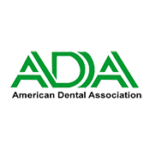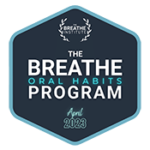If your child is experiencing speech, eating, or orthodontic problems, your dentist may recommend conducting a frenectomy. This procedure removes the connective tissue at either the top or the bottom of the mouth, helping to correct these problems. New technologies in dentistry have made frenectomies a safe and convenient option for patients of all ages.
What is a Frenectomy?
A frenectomy is simply the removal of connective tissue (called the frenum) from under the tongue or the upper gums. In a dental practice, there are two types of routine frenectomies:
Lingual Frenectomy
A lingual frenectomy involves removing the tissue connecting the underside of the tongue to the floor of the mouth. Lingual frenectomies are commonly used to correct a condition called Ankyloglossia, otherwise known as tongue-tie. Tongue-tie is usually related to a short, thick frenum, which limits the tongue’s capacity to move, difficulty with speech and often presents as a lisp.
Ankyloglossia can make it difficult for infants to feed. It can also impact speech and eating in children and adults. Patients often try to compensate for the lack of tongue mobility by changing their jaw position – resulting in other orthodontic issues.
Maxillary Frenectomy
A maxillary frenectomy involves removing the piece of tissue connecting the upper gums to the front teeth – commonly referred to as a lip-tie. Everyone has this tissue, but most issues arise when the tissue is excessively large or tight in infants. Newborns who cannot flare or curl out their lips have problems latching onto the breast while feeding.
In older children and adults, a large frenum can also push the front teeth apart, creating a gap between them and necessitating orthodontic treatment once permanent teeth come in.
Why are Frenectomies Necessary?
Parents and patients choose frenectomies for a range of reasons, and at various ages.
In infants, both lingual and maxillary ties can cause problems with feeding and potentially bottle-feeding. Symptoms of a possible tongue-tie or lip-tie in a newborn are: prolonged feeding, difficulty latching onto the breast (causing sore nipples on the mother), and excessive gassiness. More and more, parents are opting for a safe, fast-healing frenectomy to help their babies establish a good seal while eating.
In other patients, both adults and children, frenectomies can be a solution to eating or speech issues. A dentist may also recommend it as part of a patient’s overall orthodontic treatment.
Frenectomy and Orthodontics
Frenectomies can be an important part of orthodontic treatment when a long or short frenum is causing tooth or jaw displacement.
In the case of a short lingual frenum, patients may push out the lower jaw to make eating or speaking easier – causing pain in the jaw or an underbite. In this case, a lingual frenectomy may be recommended to help ensure the success of orthodontic treatment.
When treating a patient with a gap between their front teeth, an orthodontist may recommend a maxillary frenectomy after braces to prevent the teeth from spreading apart after treatment.
What Does a Frenectomy Involve?
A frenectomy is commonly accomplished using specialized soft tissue lasers. These lasers emit a highly focused beam that essentially vaporizes oral tissue. Laser treatment generally causes very little bleeding and minimal discomfort, making it an ideal solution for babies and young children. The healing process for laser frenectomies is usually quick and uncomplicated.
Frenectomies and Your Pediatric Dentist
At The Kidds Place, we take a whole mouth, whole child approach to dentistry. We understand that the tongue, gums, and other oral tissue have a significant impact on the health of teeth and jaws. We believe in treating the patient’s entire mouth to ensure the most positive dental outcomes.
Frenectomies are an important part of our practice, whether it’s fostering a great bonding experience between a new mother and her infant during feeding, or helping an orthodontic patient make sure her newly straight front teeth stay that way. We encourage families to talk with their dentist or orthodontist if they any questions about this procedure.









